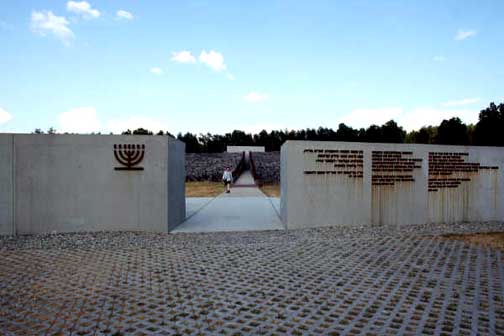 Belzec was the first of the three Operation Reinhard extermination camps which were set up to carry out the Final Solution of the Jewish Question, which was planned at the Wannsee Conference on January 20, 1942. The other two Operation Reinhard camps were Sobibor and Treblinka. The Belzec camp was located just outside the village of Belzec, on the eastern border of German-occupied Poland. The three Operation Reinhard camps were all located near a major Jewish ghetto. Belzec was between the Lublin and the Lvov ghettos. Treblinka was near the Warsaw ghetto and Sobibor was near the Lublin ghetto. All three were near the Bug river which was the eastern border of German-occupied Poland. Jews from the ghettos of southern Poland, including Lublin and Lvov, were killed at Belzec in three gas chambers which were first put into operation on March 17, 1942. The Belzec death camp was only in existence for nine months, after which it was completely dismantled to destroy the evidence of the murder of 600,000 Jews who were killed in the gas chambers. The bodies, which had been buried, were exhumed and burned on pyres before the camp was abandoned. For many years Belzec was the most forgotten camp of the Holocaust. The memorial that now exists at the site of the camp was designed by Andrzej Solyga, Zdzislaw Pidek, and Marcin Roszczyk and opened in a solemn ceremony on June 3, 2004 as a joint project of the American Jewish Committee and the Council for the Protection of the Memory of Combat and Martyrdom in Warsaw. The complex consists of a memorial to the 600,000 victims who were murdered in the camp and a museum with an exhibition about the history of the Belzec death camp. 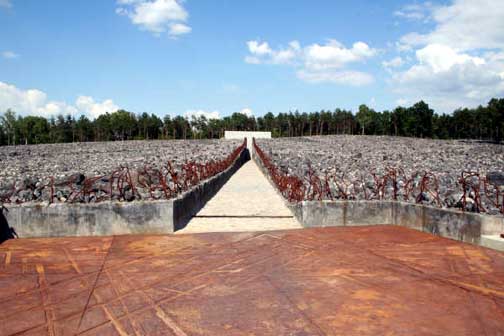 This huge field of randomly sized concrete rubble covers the entire camp area of Belzec, with the center path through the site being reminiscent of "Die Schleuse," (The Sluice) a camouflaged barbed wire path that led from the undressing and barber barracks straight to the gas chambers, which were also camouflaged with netting on raised poles. 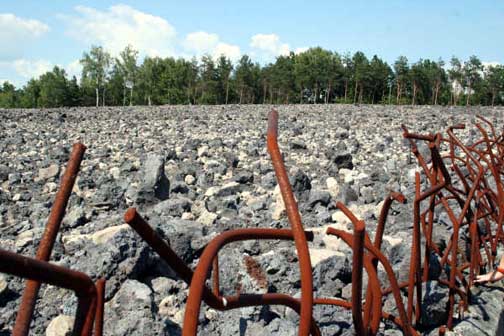 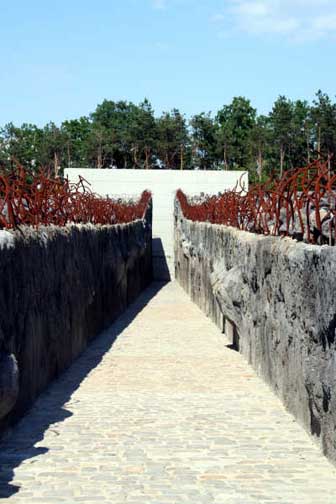  The photo above shows the Interstice which cuts through the earth, showing that the camp was built on a slope. The path leading to the granite wall is 600 feet long and the cut through the earth is 30 feet deep. Before the memorial was built, an archeological survey was made in order to avoid digging in the areas of the mass graves where the 600,000 victims were first buried and then exhumed and burned on pyres. 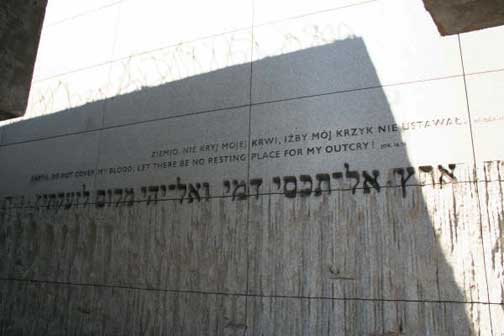 ContinueHome |